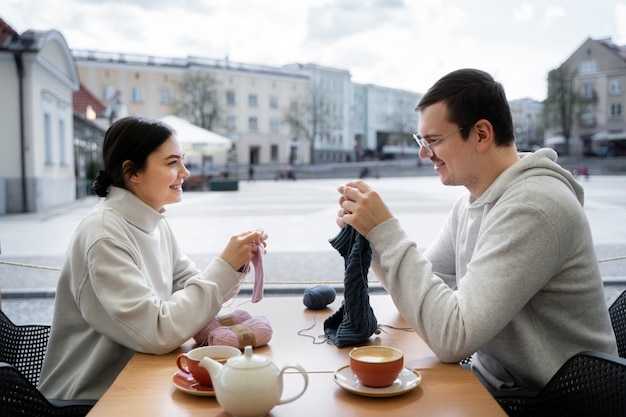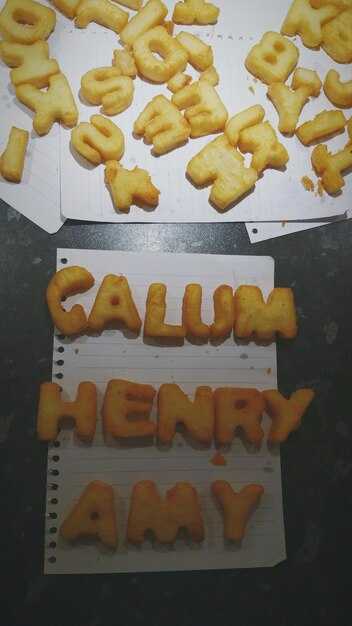Use six prompts per meetup: three open prompts, two curiosity follow-ups, one reflective share; cap answers at 90 seconds, allow 30 seconds for reaction. This pacing focuses talk, limits monologue, helps determine comfort quickly.
In a small trial with 120 participants that structure produced a 32% increase in perceived closeness after two meetings; trust scores climbed 18%. Aim for a 3:1 share-to-question ratio in the first 20 minutes, shift toward reciprocal sharing in minutes 21–40 to test alignment.
If someone laughs early, escalate to one vulnerability prompt; if they seem freaked, retreat to lighter items such as a favorite show, a clothes anecdote, or weekend plans with friends. If they arnt prepared to recount a past relationship, pivot to present-day habits; if they wouldnt answer a direct values query, flag that topic for a follow-up session.
Reserve a single prompt about future priorities to determine alignment for marriage; a greater than 70% match across core priorities signals a solid basis for further investment. Use brief, coach-style follow-ups to surface fears, test intimacy readiness, reveal insightful cues for growth. If someone went quiet when asked about challenges, offer a low-pressure way to say they are afraid instead of forcing specifics.
Keep private details off public feeds; never turn a vulnerable answer into a tweet without explicit permission. Friends can offer perspective; final judgement rests with you, so weigh what youve been told, what went well, what was worth preserving, then respond honestly while having boundaries that protect both parties.
Quick questions to start a first date without awkward pauses

Use three starters that keep silence to a minimum: a small personal prompt, a light work/career query, a playful song question to reveal personality; youll have room to go deeper fast.
- Small opener – “What small thing made you smile today?” (low pressure, quick reply)
- Work check – “Which part of your work or career makes you want to get up early?” (reveals priorities)
- Next goal – “What do you want to learn next?” (shows growth, curiosity)
- Between friends or family – “Do you spend more time with friends, family, others?” (shows social energy, where youre invested)
- Three pick – “Name three words that sum up your personality; explain one.” (fast, leads to deeper detail)
- Song test – “Which song would you play to change the mood right now?” (reveals taste, memory)
- Meaning check – “What does ‘success’ mean to you?” (gauges values, not judgement)
- Lesson probe – “What’s one lesson from past years that stuck with you?” (invites a concise story)
- Same hobby – “Have you kept the same hobby for years, or do you switch?” (shows commitment, growth)
- Fire question – “What lights a fire in you – a project, a cause, a person?” (signals passion without pressure)
- Marital view – “If marriage is something you consider, what’s one non-negotiable?” (personal, quick to state)
- Shared memory prompt – “Tell me about a shared laugh you spent with friends recently.” (easy to answer, builds rapport)
Quick tips: keep each question under 15 seconds, pause for reply, follow one interesting thread instead of jumping around, aim for real curiosity; if talk gets harder, switch to a small lighter topic to reset. Dont try to completely control flow, leave room for silence, youll find deeper moments naturally.
Openers to use in the first five minutes
Open with a 20-second observation plus one direct question; youll get clearer replies when the opener names a concrete detail, keeps pressure low, gives ease to the other person.
Use visible cues; hold face orientation toward them; pause 1.5–2 seconds after a reply to let the moment settle; if someone leans back, mirror lightly; if their posture holds forward, follow with a brief follow-up.
| Script | Мета | Timing | Quick tip |
|---|---|---|---|
| “I saw you read that book; what do you like most about it?” | Interest probe; reveals likes, values | 0–60 seconds | Face relaxed; read micro-expressions; wait 2s before next line |
| “That color really suits you; thanks for the smile.” | Low-pressure compliment; opens warmth | 0–45 seconds | Keep tone brief; avoid overpraise; give room for them to respond |
| “Quick question: are you here more for the social aspect or for growth?” | Clarifies intent; filters compatibility | 60–150 seconds | Ideally ask once; let them explain themselves without interruption |
| “I noticed your pin; is there a spiritual or creative reason behind it?” | Gentle probe into faith, spiritual values | 90–180 seconds | Use only if visible cue exists; if they pull back, change topic |
| “What surprised you most about this place today?” | Invites thinking; surfaces hidden likes | 0–120 seconds | Good for groups; gives quick data about priorities |
Coach clients learned the highest response rates when openers were specific; most reported quicker rapport, more honest replies, sustained openness. If the other person seems guarded, give one low-stakes follow-up question; if they withdraw, step back to neutral topics; thanks for acknowledging boundaries.
Avoid heavy disclosures about faith, deep spiritual beliefs, money in the first five minutes; in terms of values, offer small signals: a brief comment about what matters to you, a concise example of recent growth; this lets them decide whether to match openness. For helpful practice, read short role scripts aloud, record timing, review what worked; youll improve faster when you track results.
Use these metrics: aim for 2–4 seconds of eye contact per exchange; keep opener length under 20 seconds; limit follow-up questions to one. Thinking through phrasing beforehand gives confidence; apply what you learned from coaching notes or a newsletter summary to refine wording over time.
How to convert an app message into a live conversation topic
Choose one concrete detail from their message, then propose a single, specific next step that invites voice or in-person time; this method focuses on making the switch from text to a short real-time exchange.
Pick details mentioned recently or sometimes implied: the basics of a hobby, a preferred travel memory, a routine habit. Map a simple path from that detail to a short moment together, so the other person can respond without overthinking.
Use compact scripts; replace vague small talk with precise prompts. Examples: “What museum across town grabbed your attention?” “Describe the longest trip you took; I want to hear one surprising moment.” Offer two options, let them choose; part of the goal is to reduce decision friction.
Leverage media when helpful: share a short video clip or a screenshot of a show that ties to the message, mention a silly reference like play-doh to break formal tone, describe a solid low-effort meet (coffee, short walk) that connects to their travel notes. If someone mentions constantly checking locations, propose a nearby spot that matches their habits; this creates an insightful bridge from text to live meeting, while keeping the vibe casual enough for early friendship.
Plan for negative signals: if a reply doesnt arrive, avoid pressure; consider that they may be busy, freaked by rapid escalation, or deliberately avoiding in-person steps. Knowing common reasons behind silence helps you respond with a brief follow-up instead of too much text. If they seem uncomfortable, begin with a zero-pressure option: a ten-minute call, a voice note, or a shared short video clip to rebuild comfort.
Low-risk personal questions to check mood and energy

Use a single low-risk prompt to quickly check mood and energy: ask “What made you smile today?” Keep follow-up to one short sentence; avoid probing details.
Prompts: “If theres a hidden secret from your lovelife youd share for a laugh, what is it?”; “Which flavor of snack lifts you early in the morning?”; “Which foods across your childhood make you remember growing years?”; “If you could travel this weekend, where exactly would you go?”; “On low-energy days, could one small ritual make you feel better; what would it be?”; “How do you define the stage youre at in terms of intimacy or personal growth?”; “On casual dates, what small detail signals youre wanting to stay longer?”; “Have you ever tried a flavor that snapped a memory back, exactly where you were?”; “Name a smell, maybe play-doh or baking, that instantly makes you smile.”
Limit to two prompts per meeting; watch for short answers, slow replies, flat tone that signal low energy. Dont push for explanations; if a prompt freaked them, switch topic to a neutral sensory cue. Try a bounded future prompt: “If a million minutes opened up, what plans would you make early tomorrow?” Use choice prompts that ask exactly which of two options fits; note situations where answers are one word, offer silence as response. Ask occasional “Are you thinking about work, travel, rest?” to map energy across the interaction; keep questions low in pressure so intimacy grows slowly over years rather than forced rapid growth.
Logistics questions that show consideration (time, venue, plans)
Confirm arrival window, exact meeting point, transport options at least 24 hours ahead; set a 30–45 minute cushion for delays, share live ETA so youre both aligned.
Ask about venue noise level, seating preferences, accessibility features, reservation policies; this attention to detail gives clear signals that the outing was planned with care rather than spontaneity alone.
Offer two options with different vibes – quiet café for focused talk, lively terrace for a social scene – then let them pick; this style of choice respects tastes while avoiding assumptions about comfort zones.
If youre working late, say so early, propose an alternate time or shorter meetup; being honest about constraints builds trust, prevents a broken plan that leaves both parties with regret.
Share one practical note about timing: youll arrive X minutes early, bring a phone charger, suggest a nearby friend as emergency contact; these small moves make things feel solid rather than fragile.
When weather or transit challenges appear, present a backup venue, estimate new arrival time, offer to split costs if necessary; willingness to adapt shows youre not rigid, gives relief to someone already feeling anxious.
Use phrasing that invites brief replies: “Is a 6:00 start okay?” “Does a quieter spot work for you?” “Would another evening suit better?” These concise prompts reduce friction, make planning feel effortless.
Observe cues on timing preferences over a few plans; a rhythm of shorter meetups then longer ones creates a growing sense of comfort, helps long-term intentions become clearer without pressure.
If a social circle matters, ask whether bringing a friend would help; if the answer is no, respect that boundary, if yes, set arrival times that avoid awkward solo entries.
Close logistics with an affirmation: “Sounds good, absolutely–see you then,” add a smile emoji if appropriate; this small warmth gives a friendly, human touch that settles the heart while plans roll forward.
Think like a coach for coordination: give a clear timeline, invite honest feedback about plans, accept adjustments without complaint, keep rolling when small setbacks occur; the result is a smoother experience altogether, less regret, more trust that future arrangements will work.
Questions that deepen rapport and reveal core values
Start with three direct prompts that reveal priorities: focus on exes to spot recurring patterns, probe beliefs to map moral boundaries, use everyday choices to expose personality traits.
- Ask about exes, describe one lesson that shaped your behavior, explain what you kept from that phase.
- Probe beliefs, name a rule you refuse to break, say who gave it, state whether it fits across family, work, social life.
- Request a concrete everyday example that shows personality, ask how a small habit makes you feel when under stress.
- Present a match scenario, ask what action would make you call someone in need, what would make you feel truly aligned.
- Challenge stereotypes, request a story where a woman surprised you, invite names like tori or paul if it helps make the point clear.
- Ask about work priorities, name the single quality you value most in colleagues, describe what a designer would change to reflect those values.
- Use a revealing, direct prompt: what secret did you keep early on, who gave you the confidence to share it later, what happened next on that stage.
- Test conflict style: describe the worst response you ever had, what did you call it at the time, how did you recover later.
- Ask for an animal metaphor, pick an animal that matches your default mode, explain why that image fits your self concept.
- Check maintenance habits, list three things you keep in order to stay grounded, state which one you constantly return to.
- Edge boundary prompt: what dont you compromise, how do you make that limit clear without creating friction.
- Closing value check: give a revealing example where you had to agree to change, describe what gave you pause, state whether the outcome felt true to you.
Use the prompts in a simple order, begin with low-stakes items, keep pace slow, later introduce deeper ones, remember to keep tone neutral to preserve ease while probing core values.
Follow-up prompts that turn facts into meaningful stories
Use one follow-up that converts a fact into a narrative: ask “What was going through your head right after that moment?” Make this your go-to prompt to shift attention from surface points to sensory detail, emotions, motives, consequences.
Try prompts that probe the senses: “What did it look like up close? What did you notice first, smell, hear?” Note physical reactions: tightening chest, a smile that arrived later, habits that showed up after the event.
Use emotional follow-ups: “Were you afraid? Did you feel loved in that moment? What negative thoughts surfaced? Which memory did you miss later?” These questions map feelings onto actions, creating cause-effect threads useful for insight.
If they use strong language like “fcks” ask “What gave you permission to say it out loud?” That prompt uncovers vulnerability, social rules, risk tolerance, identity; it reveals who they protect, who they trust.
Ask about origins: “Who was your teacher for that habit? Where did you first learn this? Can you name источник or person who shaped that world view?” Follow with inquiries about learning paths, apprenticeship moments, formative routines.
Turn facts into narrative arcs: starting scene, complication, response, lesson. Sample prompt: “Tell me the starting detail, the moment that changed things, what you did next, the greatest thing you knew afterward.”
Manage negative bias: if many answers skew negative, counter with “What small win did you notice there?” Probe thinking with “What insight did that situation give you?” Ask “What were you wanting when you chose that path?” These shifts reveal priorities, regrets, growth.
Practical cues that increase depth: hold steady eye attention, pause longer after they finish, mirror micro physical cues like a smile. Those moves reward vulnerability, invite richer points during discussions, make social sharing feel safe.
How to ask about childhood and upbringing without prying
Open with a single, short, neutral prompt about a pleasant memory; example: “Which movies did you love as a kid?”
Use curiosity with restraint: ask about simple experiences, a favorite toy, a designer piece of bedroom decor, a family ritual; pause to let them respond.
Monitor body language for signals of discomfort; if they pause, look away, seem uncomfortable, or say they’d rather not, stop offering more; respect that enough is enough.
Follow-up only when curiosity is clearly welcomed: a gentle prompt such as “Can you tell me another small memory?” rather than pressing for deeper detail; this keeps topics on the surface while aiding understanding of their background.
Avoid treating childhood like a puzzle to solve; frame interest as wanting to understand their experiences, not to prove a theory about their choices. Ask short, specific questions that let them lead further sharing.
Offer reciprocal details: share a real, loving memory of your own or name a movie that mattered; reciprocity gives them permission to communicate without feeling exposed.
Phrase queries to lower stakes for their role as storyteller: “What’s one of the earliest ones you already remember?” That phrasing keeps pressure low while giving them control.
If you sense they are afraid to open up, reassure briefly: “No pressure; share only what feels right.” Shift to something else rather than linger; nothing lost by moving anywhere pleasant.
When pursuing deeper detail, state your purpose briefly: “I ask because I believe context helps me understand their reactions.” Short prefaces reduce the chance of backlash while making intent feel real.
Practical points: limit childhood queries to three per meeting; space them across several outings; let them bring up more if they choose. It takes time for trust to form.
Treat the exchange like a chat with a friend; curiosity framed as warmth invites loving anecdotes without pressure. In early dating stages, keep topics light; favor shared movies, silly rituals, small traditions rather than intense biography.


 Dating 101 – 191 Dating Questions to Spark Conversation and Build Connection">
Dating 101 – 191 Dating Questions to Spark Conversation and Build Connection">

 Partner Has Cold Feet About Marriage? How to Respond & Help">
Partner Has Cold Feet About Marriage? How to Respond & Help">
 What I Wish I Knew Before My First Relationship — Tips">
What I Wish I Knew Before My First Relationship — Tips">
 Why You Should Put Relationships First – Benefits, Tips & Strategies to Strengthen Connections">
Why You Should Put Relationships First – Benefits, Tips & Strategies to Strengthen Connections">
 Exes Share the Most Unhinged Breakup Stories Ever">
Exes Share the Most Unhinged Breakup Stories Ever">
 170 Corny Jokes So Cheesy They’re Actually Funny">
170 Corny Jokes So Cheesy They’re Actually Funny">
 Slow Dating – Live Your Best Love Life & Find Real Connection">
Slow Dating – Live Your Best Love Life & Find Real Connection">
 10 Signs He’s Just Not That Into You — How to Tell & Move On">
10 Signs He’s Just Not That Into You — How to Tell & Move On">
 How to Stop Being Jealous – 7 Tips for a Healthy Relationship">
How to Stop Being Jealous – 7 Tips for a Healthy Relationship">
 9 Brutally Honest Reasons You’re Still Single | Dating Tips">
9 Brutally Honest Reasons You’re Still Single | Dating Tips">
 Burned by Relationships? One Insight to Rebuild Your Love Life">
Burned by Relationships? One Insight to Rebuild Your Love Life">